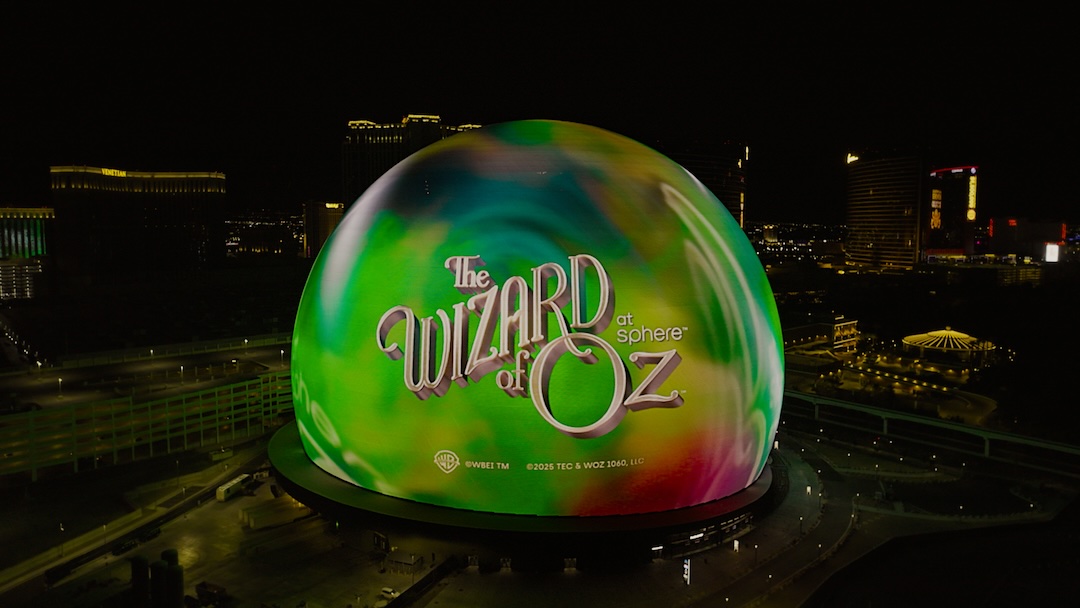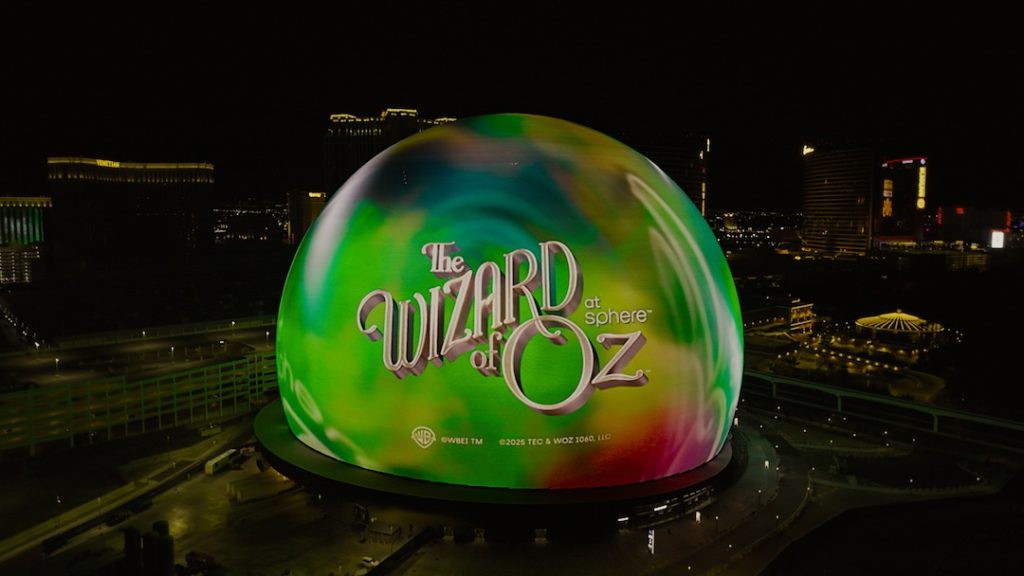Las Vegas, NV (June 25, 2025)—The Wizard of Oz has been a cultural touchstone ever since it was released back in 1939, permanently cementing Judy Garland’s red shoes, lines like “There’s no place like home,” and standards like “Somewhere Over The Rainbow” into the public consciousness. Now the classic film is headed to Las Vegas’ Sphere, set to open there in late August, and while audiences will thrill to a new immersive experience of the film, they’ll also get to hear the film like never before thanks to a radical reinvention of the film’s audio.
The Sphere presentation will be an immersive experience, intended to make audiences feel like they are inside the film, rather than just watching it on a (very) big screen. The original film, shot for a 4:3 movie screen in the 1930s, will now fill Sphere’s 160,000 sq. ft. interior display plane, which wraps up, over and around the audience to create a fully immersive visual environment.

The challenge, however, is that with an iconic musical, the sound has to be as big as the visuals—and the film’s original sound was in mono, and crammed on to a tiny optical strip on the side of the film. While that was cutting edge 85 years ago, the Sphere team realized it would likely feel odd to see Dorothy, the Tin Man, the Scarecrow and the Cowardly Lion on a 3.5-acre screen yet hear comparatively scrawny sound. That meant rethinking the film’s sound to create an experience that remains true to the filmmakers’ intent while using modern technologies to meet the audio expectations of today’s audiences.
Since the Sphere uniquely has 167,000 programmable speakers, and the ability to direct sound anywhere in the venue, the original film’s mono score was re-recorded, while preserving the casts’ vocal performances. The mono audio had to first be separated into individual stems of vocals, dialogue and sound effects. This process, a collaboration between Sphere Studios and Warner Bros. Post Production Creative Services, used various audio technologies to create the individual components while avoiding distortion or inadvertently creating artifacts.
Inside the Audio Sphere
The new score performances were recorded on the same scoring stage used for the original film in order to retain the same acoustic environment. More than 80 musicians replayed the score in the 1930s style of film music, including techniques such as pizzicato and vibrato that were standard for the era, but are less common in modern scores. Because the different parts of the orchestra could now be miked separately, Sphere Immersive Sound’s directional capabilities will allow those instruments—as well as the vocal and sound effect stems—to seemingly travel around the venue. For example, as the Tin Man tilts back and forth during his number, the isolated sound of the strings will also oscillate to emphasize his movement in visual and sonic unison.
“We approached the recording and mixing process for The Wizard of Oz at Sphere with a deep reverence for the original music,” said Julianne Jordan, Grammy Award-winning music supervisor of The Wizard of Oz at Sphere. “Sphere Immersive Sound offers opportunities for sound mixing that go well beyond a traditional theater, and this score will now be heard and felt with a level of clarity and immersion that was previously impossible.”
Since Sphere has haptic seats, that technology will be used for the first time to not only create vibrations, but also emit tones that emphasize moments in the film experience. For example, when the characters enter the haunted forest, an eerie tone will emanate from the seats, and later when they visit the Wizard in his throne room, his voice will boom throughout the venue, complemented by tremors and low frequency sounds from the seats. Intentional reverberations will be created within the venue to immerse the audience in sound.
Discover more great stories—get a free Mix SmartBrief subscription!
The sound creative team for The Wizard of Oz at Sphere includes Grammy Award-nominated music producer/sound designer Paul Freeman (Spies); Grammy Award-winning music supervisor Julianne Jordan (A Star Is Born); Academy Award-nominated composer David Newman (Anastasia); and Academy Award-winning sound engineer Shawn Murphy (Jurassic Park). And from Warner Bros. Post Production Creative Services: sound engineer Tony Pilkington (Sinners); Academy Award-winning supervising sound editor/sound designer Richard King (Dune: Part Two); and Cinema Audio Society-nominated re-recording mixer Tim LeBlanc (Superman).
The Wizard of Oz at Sphere will open for multiple screenings daily beginning August 28, 2025.

